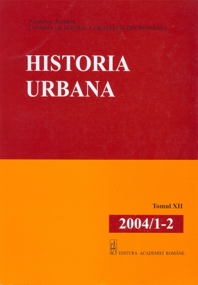Elemente de structură şi morfologie urbană românească extracarpatică la cumpăna secolelor XV şi XVI (cazul Moldovei lui Ştefan cel Mare)
Romanian Urban Structure and Morphology at the Turn of the 15th and 16th Centuries. Moldavia in the Time of Stephen the Great
Author(s): Teodor Octavian GheorghiuSubject(s): History
Published by: Editura Academiei Române
Keywords: Romanian towns; urban Structure; urban morphology; Moldavian towns; Stephen the Great
Summary/Abstract: The study is dedicated to Romanian medieval urbanism in its mature stage, and is focused on the time of Stephen the Great, although extended some decades before and after his reign. The researches on the genesis of this generation of towns tempt the Romanian historiography for the last three decades, without having reached clear conclusions and having gained a consensus. This work intends to analyze the existing research results concerning the extend of the urban area and its zoning, the density and morphology of the plots, the characteristics of the town central areas, the street net, the position of main buildings and other elements of interest, the defense system etc. The historical moment considered in the study was contradictory in the region extended at the south and east of the Carpathian Mountains. On one side, a natural growth would have been expected after about hundred years of urban development; on the other side it was a time of destruction and structural changes. The study tries to establish the relations between development and regress and to outline the way the phenomenon is to be seen in the urban form. Some previous conclusions concerning the towns of Suceava, Iasi and Roman are brought us to date; new case studies are lounged, concerning Cetatea Alba and Orheiul Vechi. Some other examples, like Botosani, Baia, Siret, Piatra Neamt, Harlau, Bacau, Vaslui, Soroca and Chilia are mentioned. It is great time to draw some conclusions that could organize together the huge amount of information accumulated till now and to establish the future directions if interdisciplinary researches.
Journal: Historia Urbana
- Issue Year: XII/2004
- Issue No: 1+2
- Page Range: 31-52
- Page Count: 22
- Language: Romanian
- Content File-PDF

